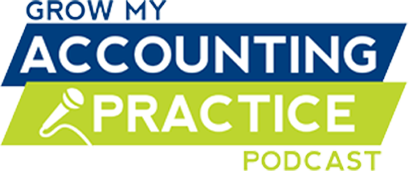It has been said that the restaurant business is a business of nickels and dimes – meaning that you really have to watch every single nickel and dime and hope you have a few left-over at the end of a period – called Profit. And I can tell you, from my experience working not only as a restaurateur but also by working in the numbers of so many businesses across so many industries, that this is very true.
Wine
There are so many moving parts to the financials of any restaurant that if you’re not keeping track, there’s going to be some leaks – usually quite a few. Take for example, your beverage costs. Wine costing is pretty easy as you generally just sell wine by the bottle or glass. Assuming you appropriately cost out your wine list, then you should be hitting your wine cost consistently every week or month – usually somewhere between 25% and 30%. If your wine cost comes in at 32% or higher, then you know there is an issue. Perhaps your staff is over-pouring the wine by the glass and you need to address that in a staff meeting. Or maybe your wine glasses are too large, and it makes sense to invest in smaller glasses? Or, maybe the bottle prices are creeping up on your invoices (very common) and you need to do some research and speak with your wine rep about some credits.
Non-Alcoholic Beverages
But another area that may not be so obvious is your non-alcoholic beverages. While this may not account for a large part of your overall sales, well, it’s still money, and it does add up. For example, soda, bottled water, and coffee, because they are fairly inexpensive to purchase, rarely have strong controls around them. However, if your soda and coffee costs are running over 15% or 20% – then there is an issue. Are servers and bartenders forgetting to charge customers for these items? Are you over-making coffee and pouring it down the drain at the end of a night? Are the staff over-doing it with what could be considered staff drinks? Addressing and fixing these small and seemingly innocuous tasks can really help keep the numbers strong.
How to Increase Your Profit
With so many moving parts, how do you keep it all straight? This is not a ‘one man’ job. It takes a village, as they say, and with so many things to watch over, you will need help. John Nicolopoulos, Partner at RMS US LLP, the 5th largest financial advisory firm in the US where he specializes in restaurants, says ‘Stay in Your Lane’. John offers that with increasing ‘margin pressure’ on restaurants every year, the restaurateur really must know their numbers. And that’s not to say that they should be the ones to produce their numbers. As a matter of fact, outsourcing accounting to a reliable, specialty bookkeeping or accounting firm is one of the best decisions a restaurateur can make. These independent firms know and understand restaurant accounting and will be able to present the important numbers, every week and/or month, to the owner in a way that the owner can understand and USE this important information in many ways to help the restaurant grow and be profitable.
Knowing your numbers, in-house controls, staff meetings and set protocols, and regular, physical inventories are a must. But there is another way to create a solid, profitable, foundation that also addresses the issues mentioned above (and others) in real time.
Profit First
Profit First is a cash management system that puts every dollar that comes into your restaurant to work.
Here’s How it Works
First step – open an ‘Income Bank Account’ where all of your sales deposits go. Then, open the following bank accounts that will organize, and give intention, to your money.
For example, if you know that you run a 30% labor cost, then $.30 on every dollar should be going to a Labor or ‘Payroll Bank Account’ that your payroll company pulls the payroll sweep from.
If you know your Food and Beverage costs run at about 32%, then you move $.32 of every dollar to a ‘Vendor – COGS’ bank account that you use to pay only your food and beverage vendors from.
If you know your meals/sales tax is 7%, then setup a ‘Sales Tax Account’ and move 7% over to this account and use it to pay your state sales or meals tax.
Once those direct or ‘Prime’ costs are put aside, then you’re left with your ‘Real Revenue’ balance. In my example of $1.00 above, that would be $.38. From this balance, you do the following.
1. Move a percentage to a ‘Profit Account’. (Usually somewhere between 5%-15%.)
2. Move a percentage to an ‘Owners Pay Account’. (Usually between 20% and 30%.)
3. Move a percentage to a ‘Tax Account’ used to pay the personal taxes of the Owner(s). (Usually 5% to 15%.)
4. Move the balance to an ‘Operating Expense Account’ (OPEX) which is used to cover all the overhead and other expenses. (Usually between 40% and 70%.)
Seems like too much work?
I guarantee you that it is not. The most amount of work is in setting up the accounts but that is a one and done type thing and chances are, you’re going to be setting up accounts for your restaurant anyway. In terms of allocating or transferring the Income to the other accounts mentioned, this entire process will take maybe 10 to 15 minutes a week or bi-weekly, once its setup – and it will be so well worth it!
Kasey’s Story
“In November of 1999, I opened my first restaurant in Boston. And for 7 years, we had quite the run but at the end of this run, there really wasn’t anything left. We consumed it all in one way or another. I know for a fact that if I had known about Profit First then, there would have been a much, much different outcome.”
How Profit First Can Help Your Business
Putting intention behind every dollar makes all the difference in the world. Having separate accounts for Labor/Payroll and COGS (Food & Bev Vendors) gives you a built-in budget on how to spend in these areas AND will immediately alert you if these costs are out of whack, i.e. not enough in the accounts to cover the bills/payroll, so that you can immediately make adjustments to fix. The other side of that is not knowing until your month-end financials are completed, showing your costs are too high. But by this point, you’ve either increased your payables beyond what they should be, increased your debt, or used up funds that should have been for Profit or Owners Pay or worse, Sales/Meals Tax (a slippery slope). Doing things this way creates an endless cycle of debt, getting behind with your vendors, not paying YOU, the Owner, which creates an entire host of other problems, and then not being a profitable business. And EVERY business needs Profit to survive.
Using Professional Assistance
Whatever you decide, whether to go ‘old school’ and wing it with one main account (not recommended), or you decide to do this right from the very beginning and use a cash management system that makes sense and works, just be sure to use an outside professional for your bookkeeping and accounting. With an industry as high energy and, often emotional, as the hospitality industry, having a completely neutral, unemotional, second set of eyes on your numbers can make all the difference.
If you’re interested in learning more, please check out our website at www.SparkBusinessConsulting.com where you can learn more about our services, Profit First, and our special Restaurant Bookkeeping Packages!
Special Thanks to our article contributor, John Nicolopoulos, Partner at RSM US LLP, the Fifth Largest Financial Advisory Firm in the US that specializes in Audit Tax and Consulting Services.
www.rsmus.com
About the Author


A former restaurateur turned bookkeeper turned Profit First Consultant, Author Kasey Anton is on a mission to help eradicate restaurateurial poverty. She and her amazing Team at Spark Business Consulting have been helping restaurants get started, get organized, and get profitable for the past 10 years and counting.










